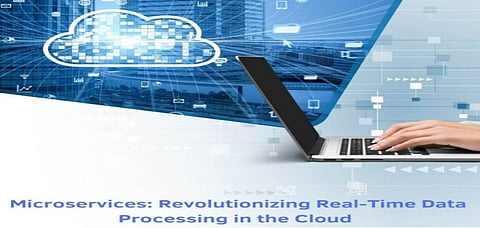

In the rapidly evolving landscape of digital technology, innovative approaches to data processing are reshaping how businesses handle massive information streams. Sai Manish Podduturi, a technology expert at a leading financial institution in the United States, has shed light on a groundbreaking architectural approach that promises to transform data management.
The digital landscape is witnessing an unprecedented data explosion. Projection-wise, the Internet landscape is expected to explode from just 33 zettabytes in 2018 to a breathtaking 175 zettabytes in 2025, with all the IoTs contributing a sensational 90 zettabytes to the same. This exponential rise is changing paradigms on technology, hence demanding revolutionary infrastructures for handling gigantic data loads instantaneously. This challenge lies not just in storing such data but also in processing them into meaningful insights at speeds previously unprecedented, thereby stretching the boundaries of what is possible within computational innovation and technological capability.
Cloud integration supercharges microservices architecture by bringing intelligent management of resources, from advanced auto-scaling mechanisms which optimize computational resources in real-time to peak performance and adaptability. Cloud-native designs have shown incredible operational improvement over what was obtainable before with designs-innovative operation improvements including a whopping 73% reduction in system recovery time and 85% increase in deployment frequency. These technological advancements equate to a much needed 70% better resource utilization.
Stream processing revolutionizes data management by delivering unprecedented speed and immediacy. Unlike traditional batch systems that process data over 15-24 hour intervals, modern stream processing operates in milliseconds, transforming how organizations interact with information. An extraordinary 95% of data can be processed within 100 milliseconds, enabling near-instantaneous insights. This breakthrough allows businesses to make rapid, data-driven decisions, turning real-time information into a strategic asset and fundamentally changing the landscape of digital decision-making and operational responsiveness.
Cloud integration supercharges microservices architecture by bringing intelligent management of resources, from advanced auto-scaling mechanisms which optimize computational resources in real-time to peak performance and adaptability. Cloud-native designs have shown incredible operational improvement over what was obtainable before with designs-innovative operation improvements including a whopping 73% reduction in system recovery time and 85% increase in deployment frequency. These technological advancements equate to a much needed 70% better resource utilization.
Architectural approach- Exceptional technical acumen The approach demonstrates great technical prowess by breaking the record in data processing. Microservices processing delivers constant write speeds at 1.2 GB/s and read speeds at 800 MB/s. Message broker platforms can handle as many as 3.2 million messages per second with very minimal latency below 15 milliseconds. Such achievements demonstrate a quantum leap in computational efficiency and allow organizations to handle massive data volumes with unprecedented speed and precision.
A critical aspect of this architecture is its robust failure-handling mechanisms. Advanced techniques like circuit breakers can dramatically reduce cascading failures by up to 90%, transforming system resilience. These sophisticated systems demonstrate remarkable reliability, maintaining 99.95% availability even under significant stress. Crucially, core services can continue functioning seamlessly even when 30% of supporting services experience disruption. This architectural approach ensures operational continuity by creating intelligent, self-healing systems that can withstand partial failures, providing organizations with unprecedented stability and performance reliability in complex computational environments.
Advanced monitoring techniques represent a quantum leap in system observability, processing up to 50,000 telemetry data points per second with remarkable precision. Distributed tracing solutions achieve an impressive 99.9% trace completion rate, delivering insights with minimal computational overhead. Machine learning-powered alert systems provide a remarkable 95% anomaly detection accuracy, transforming system management from reactive to predictive. These sophisticated monitoring approaches enable organizations to continuously optimize their digital infrastructure, identifying potential issues before they escalate and ensuring peak performance across complex technological ecosystems.
This architectural approach transcends mere technological enhancement, representing a profound reimagining of data interaction. By seamlessly integrating microservices with cloud computing, organizations unlock unprecedented potential for creating adaptive and scalable systems. These innovative frameworks enable businesses to navigate increasingly complex digital landscapes with remarkable agility and precision. The approach fundamentally transforms data processing from a static, rigid model to a dynamic, responsive ecosystem that can rapidly evolve alongside technological advancements and shifting organizational needs, empowering enterprises to harness the full potential of their digital infrastructure.
In conclusion, Sai Manish Podduturi's research highlights a transformative approach to data processing. As digital ecosystems continue to expand, microservices architecture stands poised to meet the challenges of real-time, large-scale data management, offering unprecedented speed, reliability, and efficiency.
